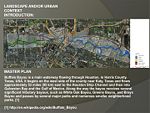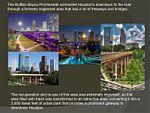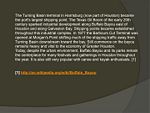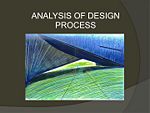Case Study Nürtingen 1
---> back to overview of Future Landscapes Group 3
add your case study title by add authors
Core Question 1: In how far does this project reveal your concept of future landscapes?
This project is a good example for how to create multi-purpose, useful places with interdisciplinary work. I would emphasize the collaboration with the locals what is in my opinion, crucial in success of public spaces, and the reuse of building materials. I think a future landscape should be a base of the local identity, and therefore strengthen the local identity and the locals awareness of their environment. This project is an example for this.
Landscape and/or urban context
Buffalo Bayou is a main waterway flowing through Houston, in Harris County, Texas, USA. It begins on the west side of the county near Katy, Texas and flows approximately 53 miles (85 km) east to the Houston Ship Channel and then into Galveston Bay and the Gulf of Mexico. Along the way the bayou receives several significant tributary bayous, such as White Oak Bayou, Greens Bayou, and Brays Bayou and passes by several major parks and numerous smaller neighborhood parks. [1]
The Buffalo Bayou Promenade connected Houston's downtown to the river through a formerly neglected area that has a lot of freeways and bridges.
The recuperation and re-use of this area was extremely important, so this area filled with trash was transformed to an attractive area, converting it into a 3,000 linear feet of urban park that provides a prominent gateway to downtown Houston.
*Biogeography*
Buffalo Bayou is very important, it’s use to relieve flooding and at the same time it was smartly use to improve the quality of the area in matters of using water and space in favor of the people. Correct use of vegetation, such as native plants and eradication of invasive species, make this space not only rich in vegetation but it is shown as a primary natural space in a pretty large city.
As we can see different marked zones are distributed all over the park, with specific vegetation for each area.
Cultural Features
Some time ago Buffalo Bayou was a place of trash of pollution , a place everybody avoid. The only activity that took place there was the annual Reeking Regatta canoe race that was aimed at drawing attention to the bayou.
As the city grew, railways, roads and buildings grew around the bayou , no one have a positive view of this neglected area, then as the project to recue this area progressed, more cultural activities progressed, festivals, celebrations, exhibitions, sports start happening in this area, now it’s one of the most used and important areas in the city.
Today, Buffalo Bayou is becoming a model of what urban waterways and a correct applied landscape should be. Among the improvements are new pedestrian-access points that invite people into the park, a dramatic blue-to-white lighting system that also enhances security, and native landscaping that includes flood-resistant plants.
Overall character
The project was intended to look for a relief of the strong structure of the city skyline, the organic forms of the bayou helped in this, with this sinuous forms a well balance structure was developed. The design of railings, walls, walks and signage so that they would be long time resistant and according to the ambient of the Bayou. Recycled concrete cobble-lined swales were placed to absorb the destructive, high volume flows of water pouring from the surface of the freeways
The planting plays a very important character in the bayou, the native plants , Nearly 300,000, including over 640 trees, were planted within the project site, these were used to soften the area and make it more attractive to the people, it also played a very important role with the diminishing of noise , and providing an habitat for the several species of animals that live there. Tall trees where planted to level the scale of the highway and some species were putted near the river’s edge to create a shadow that makes it more confortable.
History and dinamics Along with Galveston Island and Galveston Bay itself, Buffalo Bayou was one of the focal points for early Anglo-American settlement in early Texas, first part of the Spanish Empire and then part of Mexico. Early communities began to appear at the beginning of the 19th century, including Lynchburg, Harrisburg, and New Washington (modern Morgan's Point) in the 1820s. The bayou became important in Texas history when the final battle for Texas Independence was fought along its banks where it merges with the San Jacinto River.
In the 1830s new communities such as Houston were established along the shoreline. A local entrepreneur named Samuel Allen (unrelated to the founders of Houston) established a large ranch, later known as the Allen Ranch, between Harrisburg and Galveston Bay. Harrisburg was initially the major shipping power on the bayou but the destruction wrought by the Texas Revolution and the American Civil War eroded its influence allowing Houston to become the river's dominant commercial center. Buffalo Bayou and Galveston Bay were dredged during the late 19th and early 20th centuries to accommodate larger ships. By the mid 1900s the Port of Houston had established itself as the leading port in Texas eclipsing the natural harbors at Galveston and Texas City.
The Turning Basin terminal in Harrisburg (now part of Houston) became the port's largest shipping point. The Texas Oil Boom of the early 20th century sparked industrial development along Buffalo Bayou east of Houston and along Galveston Bay. Shipping points became established throughout this industrial complex. In 1977 the Barbours Cut Terminal was opened at Morgan's Point shifting much of the shipping traffic away from Turning Basin downstream toward the bay. Still commerce on the bayou remains heavy and vital to the economy of Greater Houston. Today, despite the urban environment, Buffalo Bayou and its parks remain the centerpiece for many festivals and gatherings in Houston throughout the year. It is also still very popular with canoe and kayak enthusiasts. [1]
[1] http://en.wikipedia.org/wiki/Buffalo_Bayou
Illustration: Map; sketches; short descriptive analyses
Cultural/social/political context
- Brief explanation of culture, political economy, legal framework
Illustration: Bullet points, image, background notes
Spatial analysis of area/project/plan
- What are the main structural features?
- How has it been shaped? Were there any critical decisions?
Illustration: Map/diagram/sketches photos and background notes
Analysis of program/function
- What are the main functional characteristics?
- How have they been expressed or incorporated?
Illustration: Map/diagram/sketches photos and background notes
Analysis of design/planning process
- How was the area/project/plan formulated and implemented?
- Were there any important consultations/collaborations?
Illustration: Map/diagram/sketches photos and background notes
Analysis of use/users
- How is the area/project/plan used and by whom?
- Is the use changing? Are there any issues?
Illustration: Map/diagram/sketches photos and background notes
Core Question 2: What is the role of landscape architecture in this project?
Landscape architecture plays a very important role in this project, as for making the project successful and cohesive,and for making it useful and pleasant to the people, planning every detail in advance makes this one a functional project. With landscape architecture all sources can be putted into use, from the correct use of plants,to the design of the parks and areas, all of this to be used by the people. This plays the most important role of all , without planning and good execution no project can be finished successfully.
You may add 1-2 more core questions as discussed in your group
Image Gallery
- Yourimage.jpg
your image text
- Yourimage.jpg
your image text
- Yourimage.jpg
your image text
- Yourimage.jpg
your image text
- Yourimage.jpg
your image text
References
Please add literature, documentations and weblinks
About categories: You can add more categories with this tag: "", add your categories
http://www.worldarchitecturenews.com/index.php?fuseaction=wanappln.projectview&upload_id=12240
http://www.buffalobayou.org/BB_Phase2.pdf.pdf
http://www.buffalobayou.org/guidetobb.html
http://www.buffalobayou.org/pdf/VegMngPlan.pdf
http://en.wikipedia.org/wiki/Buffalo_Bayou#Restoring_the_Buffalo_Bayou
http://www.asla.org/2009awards/104.html
http://findarticles.com/p/articles/mi_m1145/is_5_44/ai_n32406437/?tag=content;col1













































